( English version at the bottom of the page )
Je vous présente un avion jamais reproduit sur Simple Planes ( sauf erreur de ma part ) , Le le Tu-128UT . Une version qui avait la particularité d'être triplace, et d'avoir un
nez abaissé .Le troisième cockpit remplaçait le radar .
J'ai eu beaucoup de mal à reproduire le troisième cockpit . Les courbes du nez sont vraiment très spéciales .
En 1957, Savitskiy, le commandant de la chasse de la PVO, suggéra à Tupolev de concevoir un chasseur dérivé du prototype
du Tu-98, destiné à intercepter les bombardiers occidentaux, et protéger les vastes espaces désertiques de l'URSS.
Le projet, alors nommé en interne Tu-128, fut alors confié à Sergueï Yeger et lancé en fonds propres. Le 4 juin 1958, l'appareil
fut officiellement accepté par l'Union soviétique sous la dénomination officielle Tu-28.
En 1959, le projet échut à I.F. Nezval et présentait les caractéristiques suivantes : un rayon d'action de 1500 km, 2 membres
d'équipage, 2 turboréacteurs AL-7F-2, un radar RP-S Smertch opérant en bandes I et J ("Big Nose" pour l'OTAN), et 4 missiles
air-air K-80 (AA-3 "Anab" pour l'OTAN) capables d'atteindre une cible volant plus haut que leur lanceur. Ces deux derniers
éléments furent testés sur un Tu-104 modifié contre des drones. L'ensemble avion Tu-28/missiles K-80 formait le système Tu-28-80.
Le prototype effectua son premier vol le 18 mars 1961 aux mains de M. V. Kozlov et K. I. Malkhasyan. Il fut dévoilé en
juillet 1961 au public à Tushino et reçut l’appellation OTAN "Fiddler". 4 autres appareils de présérie, furent construits
et les essais se déroulèrent de 1961 au 13 juillet 1964, avec 799 vols. C'est en décembre 1963 que le système reçut la
désignation Tu-128S-4, l'appareil devenant le Tu-128 et le missile R-4. Les prototypes reçurent la désignation "Fiddler-A".
Les appareils de série (appelés à tort Tu-28P) reçurent la désignation "Fiddler-B".
La désignation officielle fut Tu-28 jusqu'en 1963, puis Tu-128.
L'appareil entra en service le 5 octobre 1965 au sein de la PVO, et 188 exemplaires furent construits de 1962 à 1970.
Cet appareil était capable d'intercepter une cible volant entre 8000 m et 21000 m à 2000 km/h, avec une vitesse maximale
en charge de 1665 km/h. Son radar avait une portée de détection de 50 km, d'acquisition de 40 km.
Une version d'entraînement .
- Réacteur gauche : touche 1 .
- Réacteur droit : touche 2 .
- Feux de navigation : touche 3 .
- Feu d'atterrissage : touche 4 .
- Aérofreins : touche 5 .
- Parachute : touche 6 .
- Verrrouilage train avant : Touche 8 .
- Trim : Trim .
- Vtol : Volets .
- Puissance >90% pour activer la post-combustion .
English version .
I present to you an airplane never reproduced on Simple Planes (unless I am mistaken), The Tu-128UT. A version which had the particularity of being three-seater, and of having a
nose down. The third cockpit replaced the radar.
I had a lot of trouble reproducing the third cockpit. The curves of the nose are really very special.
In 1957, Savitskiy, the PVO fighter commander, suggested that Tupolev design a fighter derived from the prototype.
of the Tu-98, intended to intercept Western bombers, and protect the vast desert areas of the USSR.
The project, then internally named Tu-128, was then entrusted to Sergei Yeger and launched in equity. On June 4, 1958, the aircraft
was officially accepted by the Soviet Union under the official name Tu-28.
In 1959, the project fell to I.F. Nezval and had the following characteristics: a range of 1500 km, 2 limbs
crew, 2 AL-7F-2 turbojets, an RP-S Smertch radar operating in bands I and J ("Big Nose" for NATO), and 4 missiles
air-to-air K-80s (AA-3 "Anab" for NATO) capable of hitting a target flying higher than their launcher. These last two
Elements were tested on a modified Tu-104 against drones. The Tu-28 aircraft / K-80 missile assembly formed the Tu-28-80 system.
The prototype made its first flight on March 18, 1961 at the hands of M. V. Kozlov and K. I. Malkhasyan. It was unveiled in
July 1961 to the public in Tushino and was given the NATO designation "Fiddler". 4 other pre-production devices were built
and the tests took place from 1961 to July 13, 1964, with 799 flights. It was in December 1963 that the system received the
designation Tu-128S-4, the aircraft becoming the Tu-128 and the R-4 missile. The prototypes received the designation "Fiddler-A".
The series devices (wrongly called Tu-28P) received the designation "Fiddler-B".
The official designation was Tu-28 until 1963, then Tu-128.
The aircraft entered service on October 5, 1965 within the PVO, and 188 examples were built from 1962 to 1970.
This device was able to intercept a target flying between 8000 m and 21000 m at 2000 km / h, with a maximum speed
load of 1665 km / h. Its radar had a detection range of 50 km, acquisition range of 40 km.
A training version.
- Left reactor: button 1.
- Right reactor: button 2.
- Navigation lights: button 3.
- Landing light: button 4.
- Airbrakes: button 5.
- Parachute: button 6.
- Front axle locking: Button 8.
- Trim: Trim.
- Vtol: Shutters.
- Power> 90% to activate post-combustion.
Specifications
Spotlights
- Tang0five 3.9 years ago
- PyrrhaNikos 3.9 years ago
General Characteristics
- Predecessor Tupolev TU 128 Fiddler Ver 2
- Successors 1 airplane(s) +7 bonus
- Created On Windows
- Wingspan 46.4ft (14.2m)
- Length 64.9ft (19.8m)
- Height 13.2ft (4.0m)
- Empty Weight 21,854lbs (9,913kg)
- Loaded Weight 37,491lbs (17,005kg)
Performance
- Power/Weight Ratio 1.798
- Wing Loading 100.2lbs/ft2 (489.1kg/m2)
- Wing Area 374.3ft2 (34.8m2)
- Drag Points 6768
Parts
- Number of Parts 245
- Control Surfaces 7
- Performance Cost 1,140

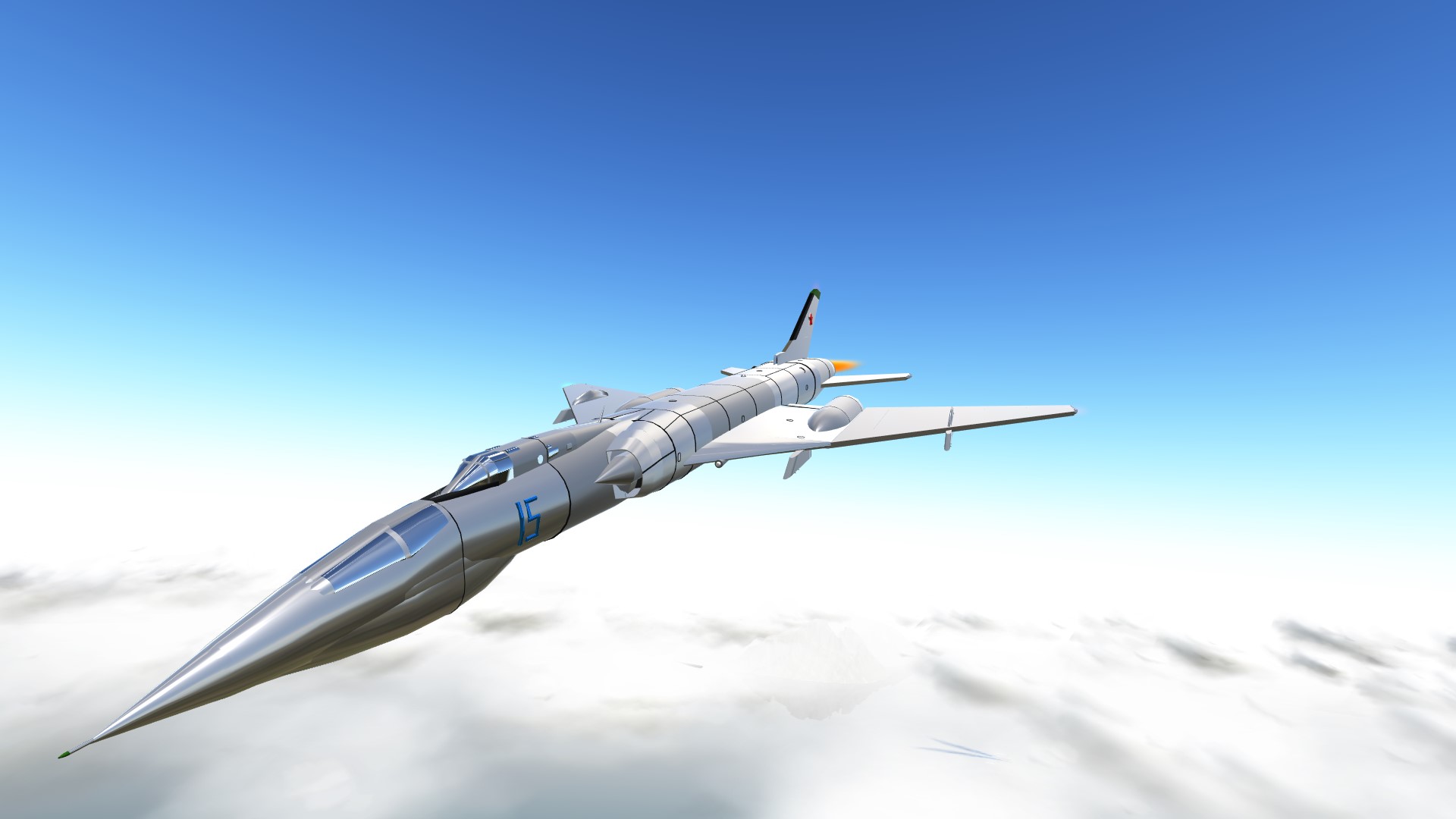
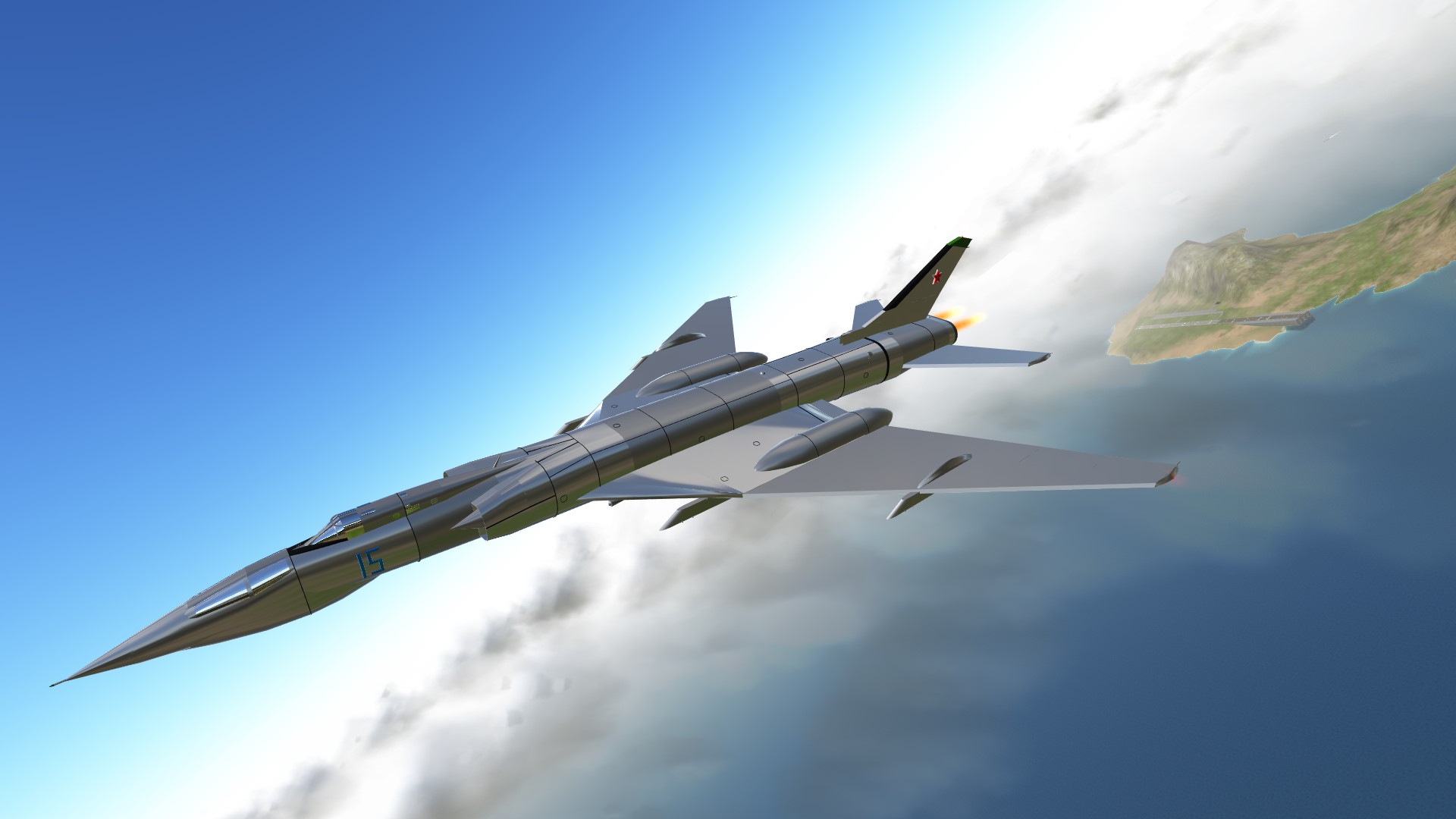
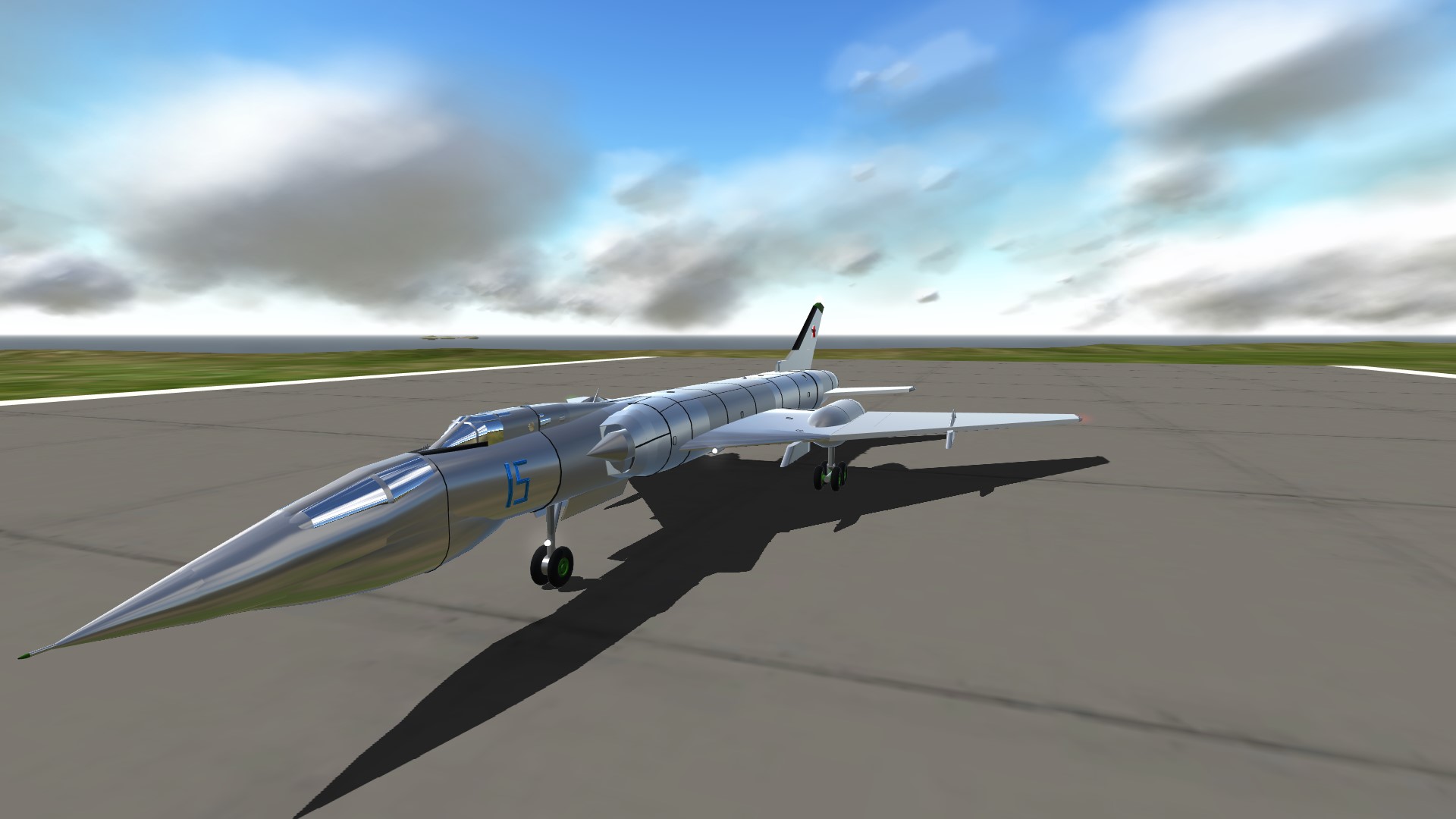
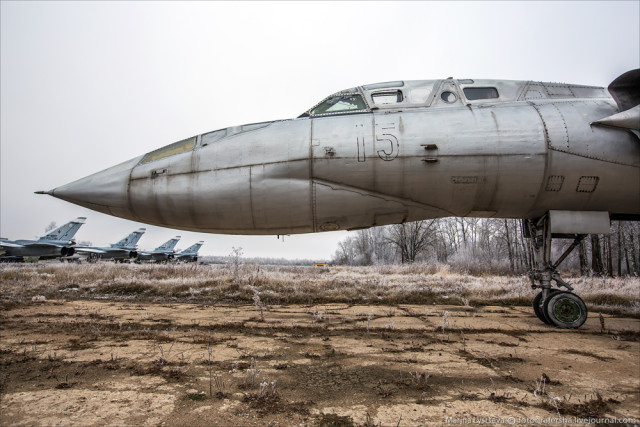
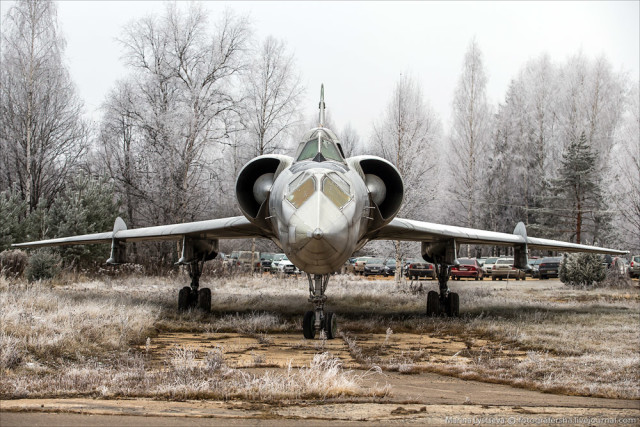
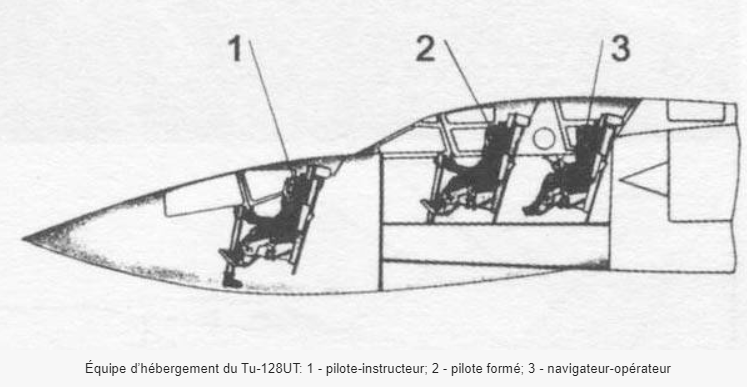

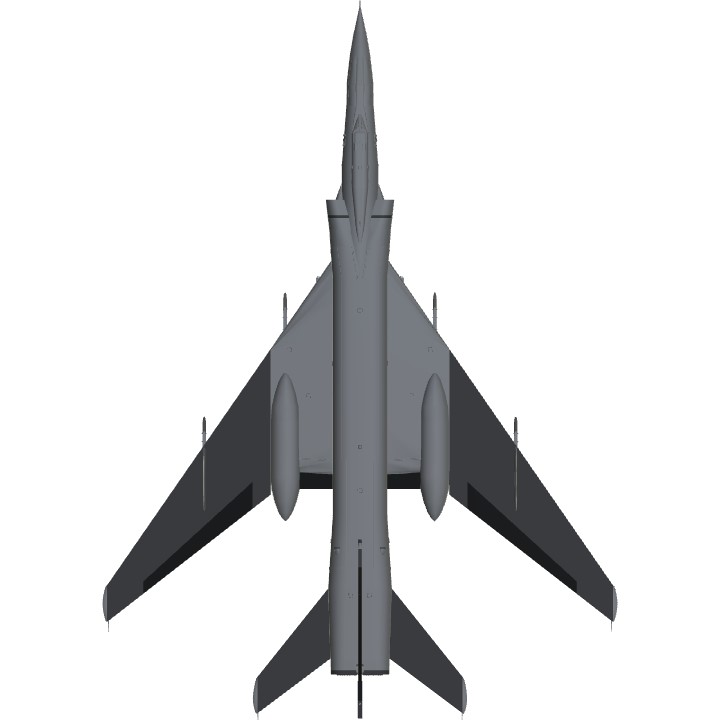
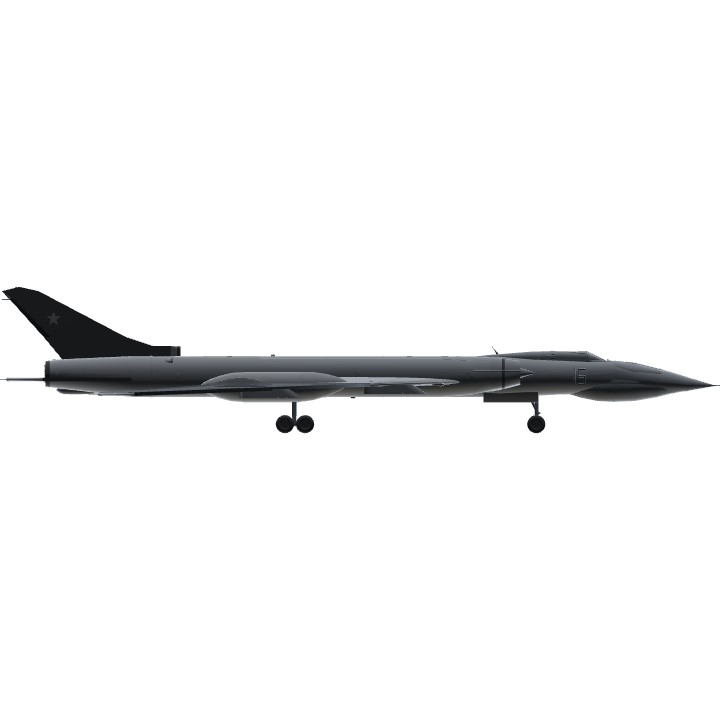
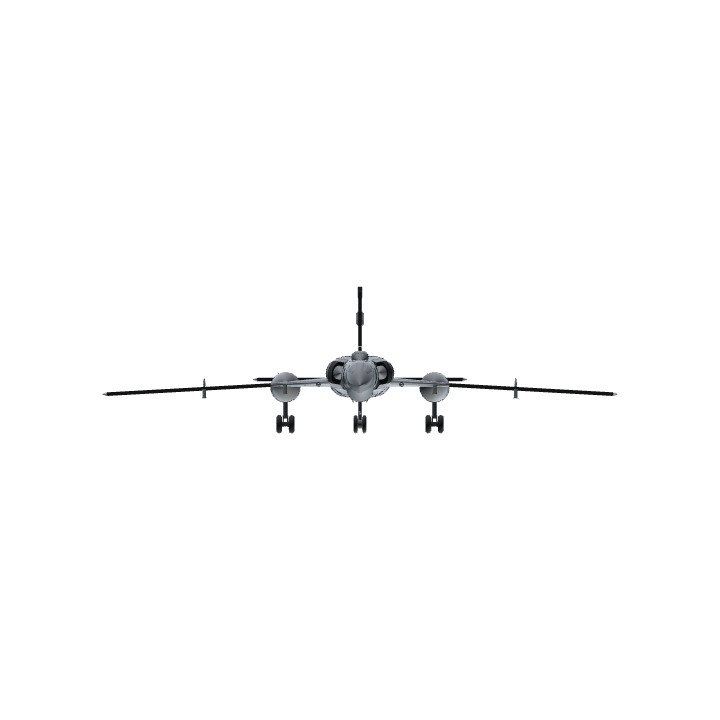
@XEPOH , Thanks for your upvote .
@UseGooglePlay , thank for your upvote .
@Sergio666 , thanks for your upvote .
@Suubk27 , thanks for your upvote .
@Kimfri , @JettStorm , thanks for yours upvotes .
@iniMiiW , thank for your upvote .
@iniMiiW , thanks for your comment .
@Tang0five , Thank you, yes it is a passion .
Always impressed by your dedication to these fascinating aircraft! @Trainzo
quite interesting I must say
@SemedianIndustries ,@Typhoon03 , thanks for yours upvotes .
@ThomasRoderick , @Treadmill103 , @Ergi , thanks for yours upvotes .
@RicardoAs1515 , @1918 , @Macabre , thanks for yours upvotes .
@Tang0five , tanks for your upvote and fore have spotlighted my plane . I really appreciate .
@Zott , thanks for your upvote .
@Kangy , thanks for your comment .
@Trainzo No wukkas mate, it's a great build!
@DJ2keroni , thanks for your comment .
No problem my guy. Very part efficient plane tho @Trainzo
@DJ2keroni , thanks for your upvote .
@Trainzo yee
@DwiAngkasaAeronautics , thanks for your upvote .
@Trainzo
Np
@Strikercritsilver , thanks for your upvote .
@PapaWii , thank for your comment . The pilots nicknamed it The Pelican .